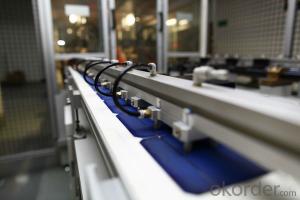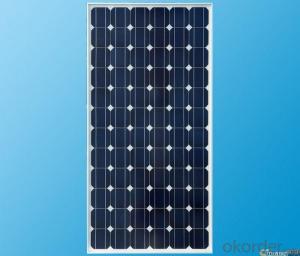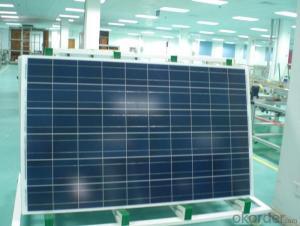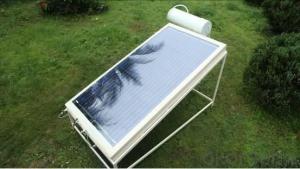50w Mini PV Solar Module 156 Solar Cell Solar Energy Lighting
- Loading Port:
- Shanghai
- Payment Terms:
- TT OR LC
- Min Order Qty:
- 11 watt
- Supply Capability:
- 1111111 watt/month
OKorder Service Pledge
OKorder Financial Service
You Might Also Like
1.Structure of Solar Module Description
The solar module is an off-gird solar power generator, designed to provide stable and reliable electricity to homes and communities without access to grid electricity or to those regions where are short of power or even without power. The solar module is convenient to move, easy to set-up with reliable performance, making it ideal for situations where emergency power is required. It is an ideal & reliable energy source for a wide variety of applications, ranging from lighting , radios, fans ,televisions ,computers ,refrigerator. The USB port is compatible with all 5V-USB charged devices. It can also act as a back-up power source during emergency situations.
2.Main Features of the Solar Module
1).High conversion efficiencies resulting in superior power output performance.
2).Outstanding power output even in low light or high temperature conditions
3).Optimized design for ease of soldering and lamination
4).Long-term stability,reliability and performance
3.Solar Module Images

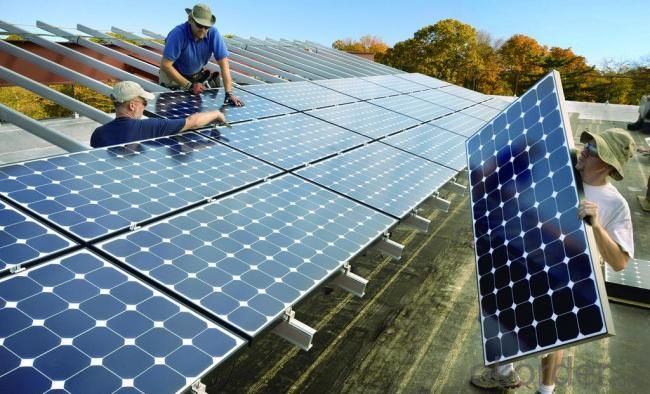
4.Solar Module Specification
Model | XMH- P50 |
Max. Power(Pm) | 50W |
Open Circuit Voltage (Voc) | 17.2V |
Max. Power Voltage (Vmp) | 21.3V |
| 2.91A |
| 3.4A |
| 715V |
| Poly crystalline 156*156 |
Dimensions(mm) | 650X666X35MM |
| 5.5kg |
| 3.2mm Low iron tempered Glass |
| irradiance 1000W/square meters, AM=1.5 cell temperature 25℃ |
5.FAQ of Solar Module
1). Q: Are you a factory or trading company?
A: We are a factory.
2). Q: Where is your factory located? How can I visit there?
A: Our factory is located in Jiangyin, Jiangsu, China, near Shanghai. You are warmly welcomed to visit us!
3). Q: How can I get some samples?
A: Please connect me for samples
4). Q: Can the price be cheaper?
A: Of course, you will be offered a good discount for big amount.
- Q:How do solar cells perform in areas with high levels of wildfire smoke?
- Solar cells performance can be significantly affected in areas with high levels of wildfire smoke. The smoke particles in the air reduce the amount of sunlight reaching the solar panels, thereby reducing their efficiency and power output. The smoke can also settle on the surface of the panels, creating a layer of dirt and debris that further hampers their performance. Regular cleaning and maintenance of solar panels are crucial in such areas to ensure optimal functioning.
- Q:What is the impact of bird droppings or debris on solar cell performance?
- Bird droppings or debris can significantly impact the performance of solar cells. When bird droppings or debris accumulate on the surface of the solar panels, they can block sunlight from reaching the cells, reducing their efficiency. This shading effect can result in a decrease in electricity generation and overall output. Additionally, bird droppings contain corrosive substances that may damage the protective coatings on the solar panels, leading to long-term performance degradation. Therefore, regular cleaning and maintenance are essential to ensure optimal solar cell performance.
- Q:Can solar cells be used in mining operations?
- Yes, solar cells can be used in mining operations. They can be employed to power various equipment and machinery used in mining processes, such as lighting, ventilation systems, pumps, and conveyor belts. Solar energy can also be used to generate electricity for on-site offices and facilities, reducing the reliance on traditional energy sources and minimizing the environmental impact of mining activities. Additionally, the use of solar cells in mining operations can contribute to cost savings and improve the overall sustainability of the mining industry.
- Q:Can solar cells be used in recreational vehicles or boats?
- Yes, solar cells can be used in recreational vehicles or boats to generate electricity, making them a sustainable and efficient power source for these vehicles.
- Q:Can solar cells be used for off-grid living?
- Yes, solar cells can be used for off-grid living. Solar cells, also known as photovoltaic cells, convert sunlight into electricity. This renewable energy source can be harnessed to power various appliances and systems in off-grid homes, providing a sustainable and independent energy solution. By storing excess electricity in batteries, solar cells ensure a continuous power supply even during cloudy or nighttime conditions. This makes them a reliable and cost-effective option for off-grid living, reducing reliance on traditional power grids and minimizing environmental impact.
- Q:Can solar cells be used in concert venues?
- Yes, solar cells can be used in concert venues. They can be installed on the rooftops or surrounding areas of the venue to convert sunlight into electricity. This renewable energy source can help power the venue's lighting, sound systems, and other electrical equipment, reducing dependence on traditional energy sources and lowering carbon emissions. Additionally, solar cells can be integrated into portable or temporary structures for outdoor concerts, providing clean energy during events.
- Q:Can solar cells be used in underwater vehicles or submarines?
- Yes, solar cells can be used in underwater vehicles or submarines. However, they have certain limitations due to the reduced availability of sunlight underwater. To overcome this challenge, the solar cells used in these vehicles are usually highly efficient and designed to operate even in low-light conditions. Additionally, the surface area of solar panels may need to be increased to compensate for the reduced sunlight intensity.
- Q:Can solar cells be used in telecommunications systems?
- Yes, solar cells can be used in telecommunications systems. Solar cells are capable of converting sunlight into electricity, which can power various telecommunications equipment such as base stations, repeaters, and remote monitoring systems. This allows for reliable and independent power supply in remote areas or during power outages, making solar cells an energy-efficient and sustainable solution for telecommunications systems.
- Q:How do solar cells perform in areas with limited space for installation?
- Solar cells can still perform well in areas with limited space for installation, thanks to advancements in technology. Compact and efficient solar panels are designed to maximize energy production even in small areas. Additionally, innovative installation techniques such as rooftop solar panels or solar canopies can help utilize available space effectively.
- Q:How do solar cells impact carbon emissions?
- Solar cells have a significant impact on carbon emissions as they generate electricity from the sun's energy, reducing the need for fossil fuel-based power generation. This clean and renewable energy source helps to decrease carbon dioxide emissions, mitigating climate change and promoting sustainable development.
1. Manufacturer Overview |
|
|---|---|
| Location | |
| Year Established | |
| Annual Output Value | |
| Main Markets | |
| Company Certifications | |
2. Manufacturer Certificates |
|
|---|---|
| a) Certification Name | |
| Range | |
| Reference | |
| Validity Period | |
3. Manufacturer Capability |
|
|---|---|
| a)Trade Capacity | |
| Nearest Port | |
| Export Percentage | |
| No.of Employees in Trade Department | |
| Language Spoken: | |
| b)Factory Information | |
| Factory Size: | |
| No. of Production Lines | |
| Contract Manufacturing | |
| Product Price Range | |
Send your message to us
50w Mini PV Solar Module 156 Solar Cell Solar Energy Lighting
- Loading Port:
- Shanghai
- Payment Terms:
- TT OR LC
- Min Order Qty:
- 11 watt
- Supply Capability:
- 1111111 watt/month
OKorder Service Pledge
OKorder Financial Service
Similar products
New products
Hot products
Hot Searches
Related keywords

